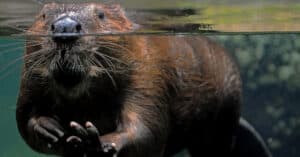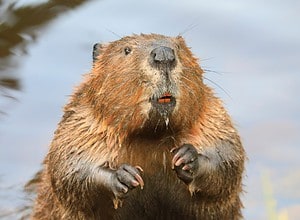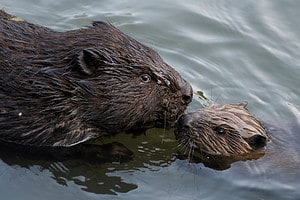One of the biggest rodents still alive is the beaver. North America is home to American beavers. They can live in the United States and Canada’s most remote areas. Eurasian beavers once roamed the entirety of Europe and Asia. As a result of hunting, the number of beavers is slowly diminishing and they are populating fewer and fewer places around the globe.
These critters have flat, scale-covered tails, webbed feet, and thick hair. They cut down trees to build homes and dams using their powerful jaws and teeth, frequently altering their surroundings in ways that few other creatures can.
The expressions “busy as a beaver” and “eager beaver” refer to someone diligent and hardworking. Have you ever wondered where the world’s largest beaver dam on record is? And how much it measures?
Read on to discover more!
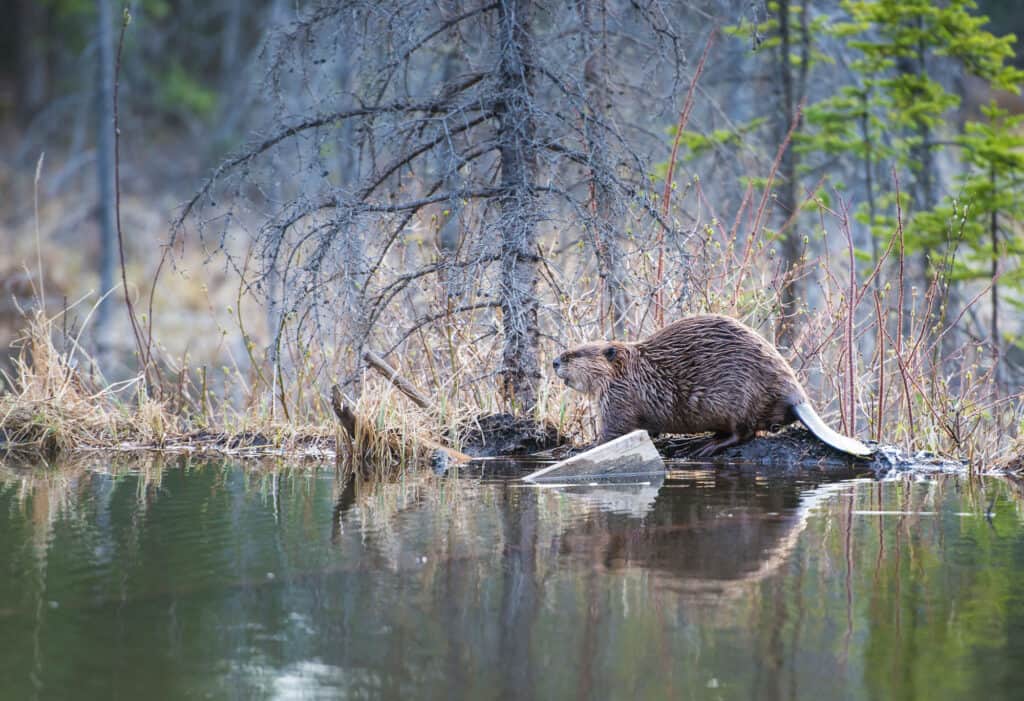
Beavers have flat, scale-covered tails, webbed feet, and thick hair. They cut down trees to build homes and dams using their powerful jaws and teeth.
©iStock.com/Jillian Cooper
Beaver Dams
Beavers have a significant impact on ecosystems. Dams can flood numerous acres and change the course of rivers. ADW claims dams lessen erosion and raise the water table, which helps to purify water because silt builds up and breaks down impurities.
Carbon levels rise, and nitrogen levels fall as silt and trash accumulate. Invertebrates shift type due to chemical changes, and new bird, fish, and amphibian species move to the freshwater source.
Flooded wood decomposes, creating an environment with open water in a woodland. Leftover dams deteriorate over time, and grasslands develop. According to ADW, dams can reach a height of 6.5 feet and multiple feet in length. Moreover, beavers use canals to transport water from vast bodies of water to their lodge-style eating location.
Largest Beaver Dam Ever Made!
The largest Beaver Dam is situated in the challenging-to-reach Wood Buffalo National Park in northern Alberta, Canada. It measures almost 2,625 feet long. Its dimensions suggest that beavers built it over several generations, as these animals typically have four to five years of life (and pair up for a lifetime).
A researcher discovered the Beaver Dam thanks to Google Earth in 2007. In fact, the almost half-mile-long dam is so enormous that satellite photographs can easily capture it. After careful observation, it turned out that the dam was not present in 1975 but largely finished by 1990.
The assortment of dirt, sticks, stones, and branches covered in a layer of grass confirms this assumption, indicating that the dam has been there for some time. It is challenging for any curious person to find and damage the place due to its remote position, which is likely why it’s still in place.
The nearby new dams that the beavers are now constructing could add nearly 300 more feet to the length of the main dam once they are connected. The creatures have abundant access to both fresh water and building supplies thanks to the dam, which spans a secluded wetland area. Beavers consume trees in addition to using them to create houses. Unlike other animals, these critters can metabolize cellulose, a significant part of their diet. Beavers consume the aspen, willow, maple, and poplar trees’ leaves, stems, and bark. They devour aquatic plants as well.
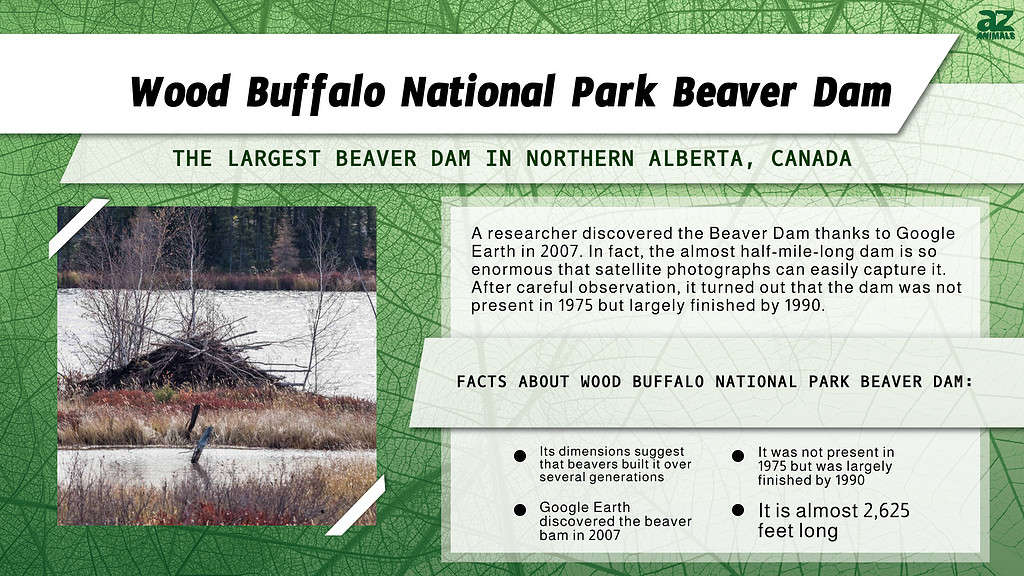
Where is the World’s Largest Beaver Dam Located on a Map?
Spanning the Alberta-Northwest Territories border, Wood Buffalo National Park, the largest national park in Canada, protects a large swath of the Northern Boreal Plains ecosystem, the largest herds of wood bison on Earth, a vital whooping crane habitat, and is home to the largest beaver dam in the world.
Interesting Beaver Facts
Newborn American beavers, known as kits, can swim the day after they’re born! They move through the water at a speed of five miles per hour thanks to their webbed feet and rudder-like tail. Also, they can submerge themselves for up to 15 minutes at a time before needing to come up for air. They have additional eyelids that shield their eyes while still allowing them to see underwater. But these critters use their tails for more than just swimming. Beavers also smack the water with their tails as they dive away from danger to frighten predators.
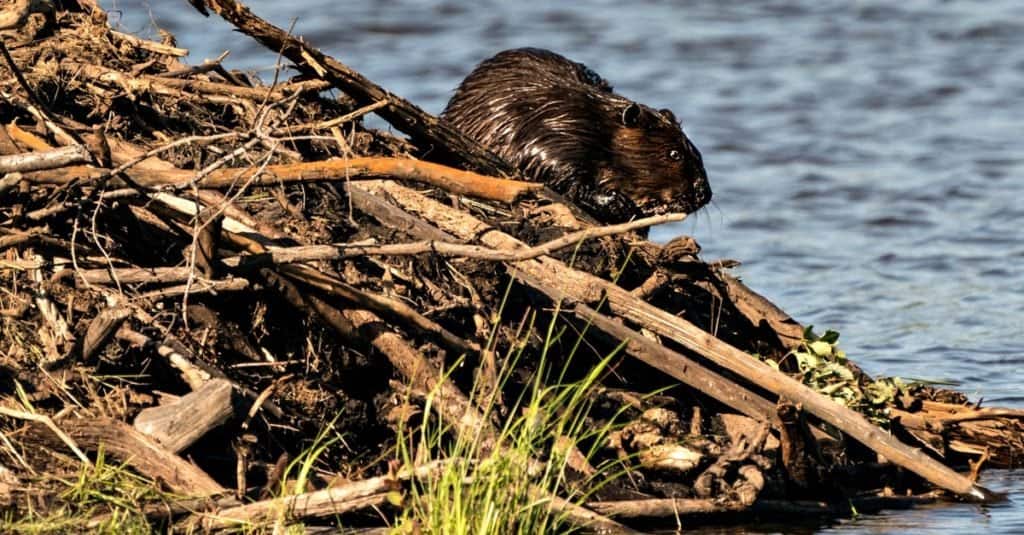
Beavers have a significant impact on ecosystems as the dams they build can flood numerous acres and change the course of rivers.
©Rejean Bedard/Shutterstock.com
For the course of the winter, beavers carry on eating and building dams. The front teeth that beavers have are used to keep cutting edges by having enamel that erodes more quickly than the rest of their teeth. A single beaver can take down two hundred trees in a single year. Lastly, a group of beavers coexist in a home range that is roughly half a mile long. Along with using vocalizations and body language, beavers also use scent marking to communicate with other beavers.
The pope ruled in the 16th century that beavers could be deemed as fish and consumed during Catholic fast days because of their scaly tail and semi-aquatic existence. Despite not posing a significant hazard to humans, beavers can spread diseases, including giardiasis and tularemia, also known as beaver fever. Tularemia-causing bacteria and giardiasis-causing parasites are typically spread by contact with infected feces, ingesting polluted water, and fleas and ticks.
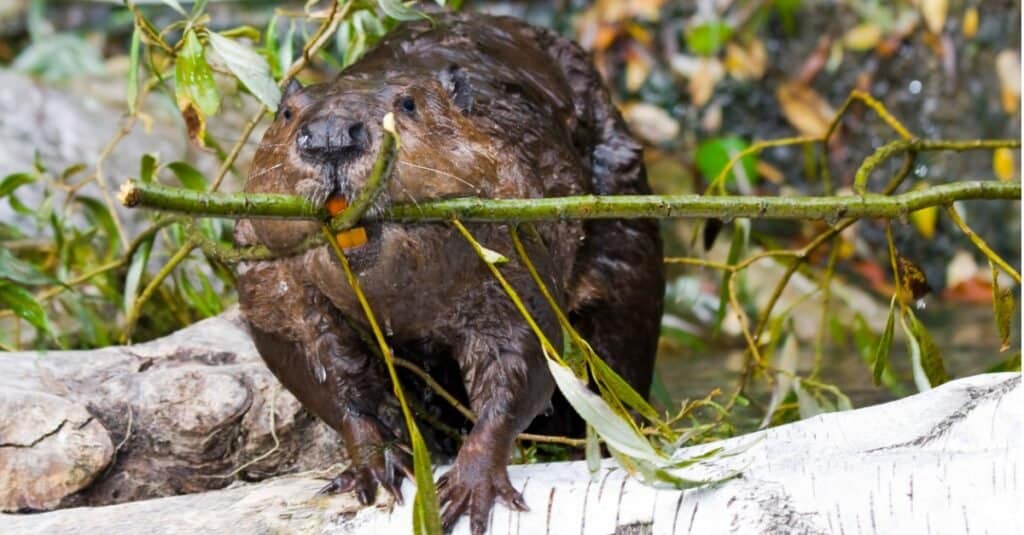
The front teeth that beavers have are used to keep cutting edges by having enamel that erodes more quickly than the rest of their teeth.
©iStock.com/belizar73
The photo featured at the top of this post is © Dan-Pepper/Shutterstock.com
Thank you for reading! Have some feedback for us? Contact the AZ Animals editorial team.



